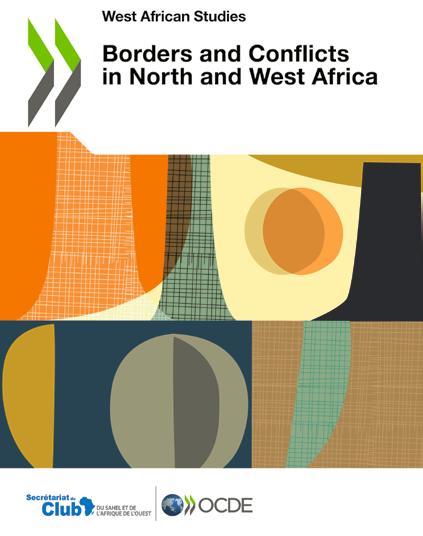Borders and Conflicts in North and West Africa
BORDERLANDS ARE MORE VIOLENT THAN OTHER SPACES
Border violence in North and West Africa is increasing. Borderlands are particularly affected by very intense, concentrated violence. 46% of all violent events in Burkina Faso, Mali and Niger are within 50 km of their
shared borders. Data covering 21 states over 23 years (1997-2021) shows that violence is more frequent near borders and tends to decrease progressively as one moves away from a border.
Source : OECD/SWAC (2022) based on data from The Armed Conflict Location & Event Data Project (ACLED), https://acleddata.com/. Data available through 30 June 2021. ACLED data is publicly available.
4 000 violent events occured; representing 9% of all violent events
Within 10km of a border
19 000 fatalities representing 11% of all fatalities
Where 6% of the region’s population lives
Within 20km of a border
15% of violent events occured
Violent events by border distance in North and West Africa, 1997-2021
Within 50km of a border
25% of violent events occured
Note: 2021 data are projections based on a doubling of the number of events recorded through 30 June.
Source: OECD/SWAC (2022) based on data from The Armed Conflict Location & Event Data Project (ACLED), https://acleddata.com/. ACLED data is publicly available.
Within 100km of a border
60% of victims (in the first six months of 2021)
Nearly 50 of these events involved civilians
NOT ALL BORDERLANDS ARE ALIKE
Not all borderlands are epicentres of violence all of the time. However, when violence does emerge, it often does so close to a borderland because they are the limits of a state’s influence. These are also spaces where alternative group
identities can develop. As such, many groups become more transborder such as certain Al Qaeda-related groups. However, Boko Haram/ ISWAP remains focused on Nigeria.
SPATIAL DYNAMICS CONFLICT INDICATOR (SCDi)
The SCDi analyses the changing geography of violence over time. The indicator has two elements. The first is the intensity of violence or the number of violent events in a particular area. The second is the concentration of violence or the spatial distribution of conflict events in a particular area. Four different types of conflict can therefore be identified: clustered high-intensity, dispersed high-intensity, clustered low-intensity and dispersed low intensity.
The major border conflict epicentres are the Burkina Faso/Mali/Niger tri-border and the Lake Chad region. Clustered high-intensity conflict dominates in these areas indicating that conflict is likely to persist.
Spatial Conflict Dynamics indicator (SCDi) in border regions, 2020
3.
Source: OECD/SWAC (2022) based on data from The Armed Conflict Location & Event Data Project (ACLED), https://acleddata.com/. ACLED data is publicly available.




